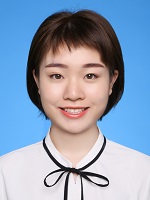Xuhai Chen
MS Student
Institute of Cyber-Systems and Control, Zhejiang University, China
Biography
I am pursuing my M.S. degree in College of Control Science and Engineering, Zhejiang University, Hangzhou, China. My major research interests include deep Learning, image super-resolution, few-shot learning and anomaly detection.
Research and Interests
- Image Super-Resolution
- Few-Shot Learning
- Anomaly Detection
Publications
- Xuhai Chen, Jiangning Zhang, Chao Xu, Yabiao Wang, Chengjie Wang, and Yong Liu. Better “CMOS” Produces Clearer Images: Learning Space-Variant Blur Estimation for Blind Image Super-Resolution. In 2023 IEEE/CVF Conference on Computer Vision and Pattern Recognition (CVPR), 2023.
[BibTeX] [Abstract] [DOI] [PDF]Most of the existing blind image Super-Resolution (SR) methods assume that the blur kernels are space-invariant. However, the blur involved in real applications are usually space-variant due to object motion, out-of-focus, etc., resulting in severe performance drop of the advanced SR methods. To address this problem, we firstly introduce two new datasets with out-of-focus blur, i.e., NYUv2-BSR and Cityscapes-BSR, to support further researches of blind SR with space-variant blur. Based on the datasets, we design a novel Cross-MOdal fuSion network (CMOS) that estimate both blur and semantics simultaneously, which leads to improved SR results. It involves a feature Grouping Interactive Attention (GIA) module to make the two modalities in-teract more effectively and avoid inconsistency. GIA can also be used for the interaction of other features because of the universality of its structure. Qualitative and quantitative experiments compared with state-of-the-art methods on above datasets and real-world images demonstrate the superiority of our method, e.g., obtaining PSNR/SSIM by +1.91↑/+0.0048↑ on NYUv2-BSR than MANet 1 1 https://github.com/ByChelsea/CMOS.git.
@inproceedings{chen2023cmos, title = {Better "CMOS" Produces Clearer Images: Learning Space-Variant Blur Estimation for Blind Image Super-Resolution}, author = {Xuhai Chen and Jiangning Zhang and Chao Xu and Yabiao Wang and Chengjie Wang and Yong Liu}, year = 2023, booktitle = {2023 IEEE/CVF Conference on Computer Vision and Pattern Recognition (CVPR)}, doi = {10.1109/CVPR52729.2023.00165}, abstract = {Most of the existing blind image Super-Resolution (SR) methods assume that the blur kernels are space-invariant. However, the blur involved in real applications are usually space-variant due to object motion, out-of-focus, etc., resulting in severe performance drop of the advanced SR methods. To address this problem, we firstly introduce two new datasets with out-of-focus blur, i.e., NYUv2-BSR and Cityscapes-BSR, to support further researches of blind SR with space-variant blur. Based on the datasets, we design a novel Cross-MOdal fuSion network (CMOS) that estimate both blur and semantics simultaneously, which leads to improved SR results. It involves a feature Grouping Interactive Attention (GIA) module to make the two modalities in-teract more effectively and avoid inconsistency. GIA can also be used for the interaction of other features because of the universality of its structure. Qualitative and quantitative experiments compared with state-of-the-art methods on above datasets and real-world images demonstrate the superiority of our method, e.g., obtaining PSNR/SSIM by +1.91↑/+0.0048↑ on NYUv2-BSR than MANet 1 1 https://github.com/ByChelsea/CMOS.git.} }

